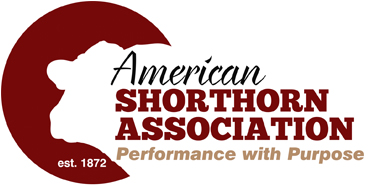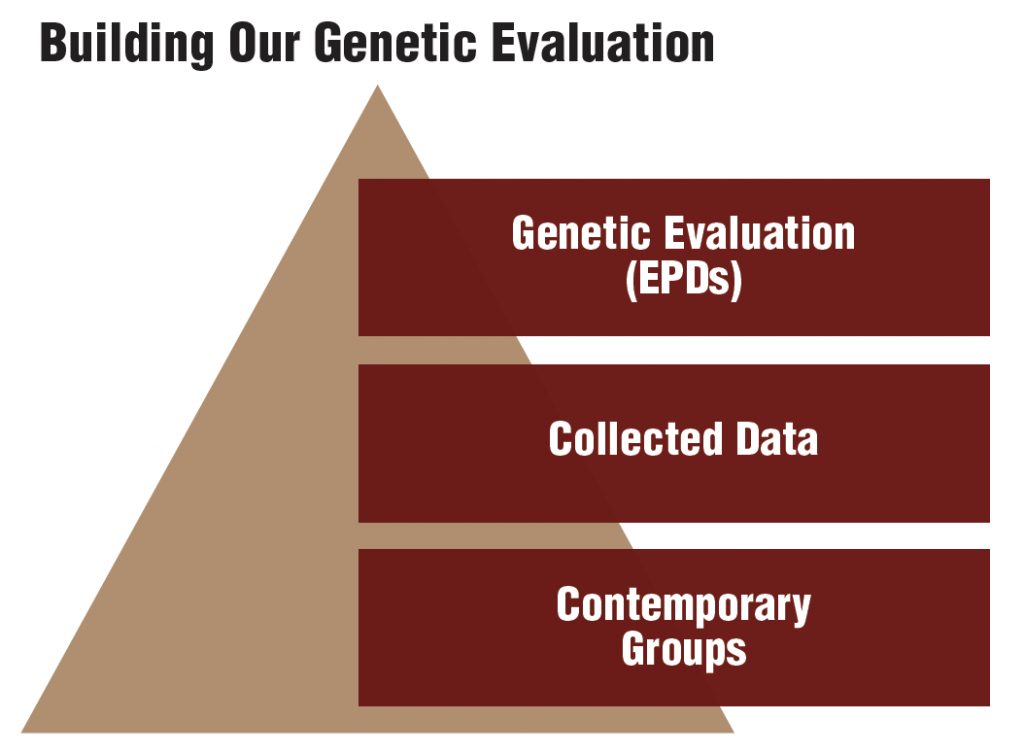We’ve reached the finale in the series of articles discussing the lineup of available selection indices for Shorthorn breeders and customers. After covering the basics of what goes into a selection index in January, and further explaining $Calving Ease and $Feedlot in February, March finds us with two final pieces of the index puzzle to piece together: $British Maternal Index ($BMI) and $Fescue.
$British Maternal Index
The written definition of $BMI on the ASA website is as follows:
“This multi-trait selection index attempts to measure a bull’s potential profitability when complimenting the British cow base (Angus, Red Angus, Hereford, etc.) in a maternal breeding program. Shorthorn females can likewise be gauged at adding value to British or British-composite bulls of other breeds. A balance of growth (WW) and carcass traits (REA, Fat, MB) are desired with a strong maternal component (CED, Milk, CEM) aimed at moderate mature size (YW), optimum reproductive efficiency and cow longevity.”
A few points of emphasis can be gleaned from this Websteresque definition. First and foremost, you can figure out that there are several traits of interest included in $BMI. In a more comprehensive scenario like this one, there are more traits that become involved. I think you will notice that the production situation outlined in this index is more complex than $Feedlot, and certainly more involved than $Calving Ease. Many of America’s commercial cattle producers have their programs set up with management similar to what is described in $BMI: British-based cows, selling calves at weaning, and retaining replacements heifers.
With most commercial cattlemen selling calves at weaning, the economic drivers of this sector of their enterprise are ive calves and pounds of calf at weaning. With that in mind, it makes perfect sense for the CED and WW EPDs to play a significant part of $BMI. Weaning weight has arguably the most significant impact on $BMI of any included traits. When retaining females for the breeding herd, they need to be able to have a live calf, produce milk to raise that calf, and do so in a moderate mature size. While we have EPDs to measure two of these 3 traits (CEM and Milk), we have to use YW as an indicator trait for mature size since there is a not current EPD for mature cow weight in the Shorthorn genetic evaluation. A higher YW EPD has a more negative impact on $BMI, as bigger YW indicates a larger mature cow size. Even though it is not a direct point of emphasis in the scenario outlined for $BMI, carcass traits (REA, Fat, Marb) do play a role in the calculation, albeit smaller than the other traits outlined. Once these cattle are sold at weaning and enter the feedlot, the ones with the genetic capability to perform on the rail become more valuable to feeders.
When the $BMI index was developed, The American Shorthorn Association did not have a Stayability EPD to include in $BMI. Obviously, the ability of a female to stay in the cow herd productively has an impact on her ability to add profit to the ranch’s bottom line. Like I mentioned in the previous article for $Feedlot, it’s not as easy to edit an index as to just stick the Stayability EPD into the $BMI formula and it still work properly. There have been several discussions amongst staff, ASA BOD and breeders involved in ASA committees on the best way to improve this index going forward.
$Fescue
The youngest and most unique member of the Shorthorn index lineup is $Fescue. The components of $Fescue are very similar to $BMI, but with an added genomic piece to the puzzle. The addition of $Fescue is only for those animals who have had the Fescue Tolerance T-Snip test that is offered by AgBotanica performed and recorded with ASA. The test results are reported on a 0-50 scale, with cattle scoring a 50 considered to be most tolerant of toxic fescue. Research from AgBotanica indicates that cows with incrementally higher scores for the fescue tolerance test weaned off heavier calves than those with lower scores (40s weaned off heavier calves than 30s, who weaned off heavier than 20s, etc.)
The methodology behind $Fescue includes the calculation of $BMI with the Fescue Tolerance test score incorporated into the equation as a weighted factor. With the research conducted by AgBotanica showing how much of an effect the score has on weaning weight produced, it was possible to weight the score into a selection index. The most logical piece to incorporate with $Fescue is $BMI, as a production scenario that is most likely to be impacted by grazing toxic fescue is a cow/calf situation like the one outlined for $BMI.
Wrap Up
With this look into the components of each selection index that is offered to ASA members, hopefully you now have a better idea of what makes up these tools and have more confidence to use them in your mating decisions. As always, these are just a few of the available tools out there to help you breed better cattle. A tool is only useful if it’s used properly, and only using one tool to try and do a complex job (like breeding cattle) can prove very difficult. Use your knowledge of your herd, in addition to the available tools like EPDs and selection indices, to make the most informed decision.
Written by Matt Woolfolk, Director of Performance Programs





![[ Random Image ]](/wp-content/themes/shorthorn/headers/header2.jpg)
